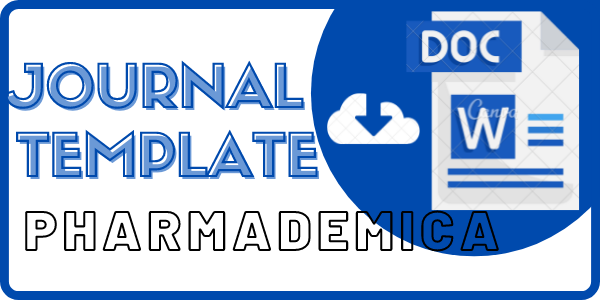Kombucha of Saba Banana Pseudo Stem: Total Phenolic Content, Antibacterial Activity, and Effect on the Viability of Lactobacillus gasseri
DOI:
https://doi.org/10.54445/pharmademica.v2i2.32
 Abstract View:
Abstract View:
538
 PDF downloads:
PDF downloads:
1158
Keywords:
fermentation, kombucha, total phenolic content, viability of Lactobacillus gasseri, saba banana pseudo stemAbstract
Saba banana pseudo stem (Musa acuminate balbisiana Colla) contains several secondary metabolites which have potential as antioxidant and antibacterial. Fermentation is known to increase the level of phenolic compounds and their bioactivity. This study aims to analyze the effect of kombucha fermentation of saba banana pseudo stem on total phenolic content, antibacterial activity, and its effect on the viability of Lactobacillus gasseri. Banana pseudo stems were fermented with kombucha culture for 12 days at room temperature. The total phenolic content was determined by the Folin-Ciocalteu method. The antibacterial activity was tested by the sumuran diffusion method. The viability of L. gasseri was determined by the Total Plate Count (TPC) method. The total phenolic content of saba banana pseudo stem increases by 60.88% after being fermented with kombucha, but the kombucha of saba banana pseudo stem does not show any antibacterial activity against Escherichia coli and causes a decrease in the viability of L. gasseri. This study shows that kombucha fermentation is beneficial for increasing phenolic level and has a potency as an antibacterial, especially against Gram positive group.
Downloads
References
Arakawa, K., Matsunaga, K., Takihiro, S., Moritoki, A., Ryuto, S., Kawai, Y., Masuda, T., & Miyamoto, T. (2015). Lactobacillus gasseri requires peptides , not proteins or free amino acids , for growth in milk. Journal of Dairy Science, 98(3), 1593–1603. https://doi.org/10.3168/jds.2014-8860
Baltova, K., & Dimitrov, Z. (2014). Probiotic and cultural characteristic of strain Lactobacillus gasseri 4/13 of human origin. Biotechnology & Biotechnological Equipment, 28(6), 1084–1088. https://doi.org/10.1080/13102818.2014.974303
Bhernama, B. G. (2020). Skrining fitokimia ekstrak etanol rumput laut (Gracilaria sp.) Asal desa neusu kabupaten Aceh Besar. Jurnal Amina, 2(1), 1–5. https://journal.ar-raniry.ac.id/index.php/amina/article/view/418
Chofidah, A. I., Danu, M. D., & Rosyidah, I. H. (2019). Uji aktivitas antibakteri kombucha rosela (Hibiscus Sabdariffa L.) terhadap bakteri Escherichia coli dan Staphylococcus aureus. Journal of Pharmaceutical-Care Anwar Medika, 2(1), 43–47. http://dx.doi.org/10.36932/jpcam.v2i1.17
Dewi, S. S., & Anggraini, H. (2012). Viabilitas bakteri asam laktat asal ASI terhadap pH asam lambung dan garam empedu. Seminar Hasil-Hasil Penelitian_LPPM UNIMUS, 97–102. https://jurnal.unimus.ac.id/index.php/psn12012010/article/download/501/550
Endarini, L. H. (2016). No Title (p. 215).
Epand, R. M., Walker, C., Epand, R. F., & Magarvey, N. A. (2016). Molecular mechanisms of membrane targeting antibiotics. Biochimica et Biophysica Acta - Biomembranes, 1858(5), 980–987. https://doi.org/10.1016/j.bbamem.2015.10.018
Hardiansi, F., Afriliana, D., Munteira, A., & Wijayanti, E. D. (2020). Perbandingan Kadar Fenolik dan Aktivitas Antimikroba Rimpang Jeringau (Acorus calamus) Segar dan Terfermentasi. Pharmacy Medical Journal, 3(1), 16–22. https://doi.org/10.35799/pmj.3.1.2020.28959
Hasanah, U., & Wijayanti, E. (2020). Toksisitas akut kombucha daun tin (Fiscus Carica) dengan metode brine shrimp lethality test (BSLT). Pharmacy Medical Journal, 3(1), 11–15. https://doi.org/10.35799/pmj.3.1.2020.28958
Hidayah, N., Mustikaningtyas, D., & Bintari, S. H. (2017). Aktivitas antibakteri infusa simplisia Sargassum muticum terhadap sertumbuhan Staphylococcus aureus. Life Science, 6(2), 49-54. https://journal.unnes.ac.id/sju/index.php/UnnesJLifeSci/article/view/25345
Ita Purnami, K., Anom Jambe, A., & Wisaniyasa, N. W. (2018). Pengaruh jenis teh terhadap karakteristik teh kombucha. Jurnal Ilmu Dan Teknologi Pangan (ITEPA), 7(2), 1–10. https://doi.org/10.24843/itepa.2018.v07.i02.p01
Lantriyadi, Alimuddin, A. H., & Rudiyansyah. (2017). Sintesis senyawa antrakuinon dari eugenol dan ftalat anhidrida. JKK, 6(2), 64–69. https://jurnal.untan.ac.id/index.php/jkkmipa/article/view/20297
Lintang, A. L. D., Noverita, & Permana, A. (2020). Daya hambat propolis terhadap bakteri Staphylococcus aureus dan Escherichia coli. Jurnal Pro-Life, 7(3), 237–250. https://doi.org/10.33541/jpvol6Iss2pp102
Loliwu, Y. A., & Marota, J. T. (2021). Pemanfaatan limbah batang pisang sebagai pakan alternatif pada penggemukan ternak sapi. Jurnal Pengabdian Masyarakat, 1(1), 19–23. https://ojs.unsimar.ac.id/index.php/mosintuwu/article/view/19-23
Mahadi, I., Sayuti, I., & Habibah, I. (2016). Pengaruh variasi jenis pengolahan teh (Camellia sinensis L Kuntze) dan konsentrasi gula terhadap fermentasi kombucha sebagai rancangan lembar kerja peserta didik (LKPD) biologi SMA. Jurnal Biogenesis, 13(1), 93–102.
Marhamah, & Putri, I. W. (2018). Efektivitas ekstrak batang pisang kepok (Musa x paradisiaca Linn.) terhadap pertumbuhan bakteri Streptococcus pyogenes. Jurnal Analis Kesehatan, 7(1), 704–709. http://dx.doi.org/10.26630/jak.v7i1.932
Mukhtarini. (2014). Ekstraksi, pemisahan senyawa, dan identifikasi senyawa aktif,”. Jurnal Kesehatan, 7(2), 361–367. https://doi.org/10.24252/kesehatan.v7i2.55
Murelina, E. M., & Wijayanti, E. D. (2018). Perbandingan Kadar Fenolik Total Sari Rimpang Temu Giring (Curcuma heyneana) Segar dan Terfermentasi. Journal Cis-Trans (JC-T), 2(2), 20–24. http://dx.doi.org/10.17977/um026v2i22018p020
Novitasari, E. D., & Wijayanti, E. D. (2018). Aktivitas Antimikroba Teh Asam Daun Tin (Ficus carica) Secara In Vitro. Journal Cis-Trans (JC-T), 2(2), 25–29. http://dx.doi.org/10.17977/um026v2i22018p025
Nurmiati, N., & Wijayanti, E. D. (2018). Perbandingan Kadar Fenolik Total Antara Seduhan Daun Gaharu Dan Kombucha Daun Gaharu ( Aquailaria malaccensis ). Journal Cis-Trans (JC-T), 2(1), 6–11. http://dx.doi.org/10.17977/um026v2i12018p006
Putri, D. D., Nurmagustina, D. E., & Chandra, A. A. (2014). Kandungan total fenol dan aktivitas antibakteri kelopak buah rosela merah dan ungu sebagai kandidat feed additive alami pada broiler. Jurnal Penelitian Pertanian Terapan, 14(3), 174–180. https://doi.org/10.25181/jppt.v14i3.157
Sa’diyah, L., & Lestari, K. A. P. (2020). Pengaruh lama pemanasan terhadap nilai ALT bakteri teh kombucha. Journal of Pharmacy and Science, 5(1), 21–24. https://www.academia.edu/download/81920788/136.pdf
Downloads
Published
How to Cite
Issue
Section
License
Copyright (c) 2023 Nur Laela, Fitri Husniatin Nisa, Riki Purwosutanto, Nur Hayati, Ernanin Dyah Wijayanti

This work is licensed under a Creative Commons Attribution-ShareAlike 4.0 International License.









.png)








